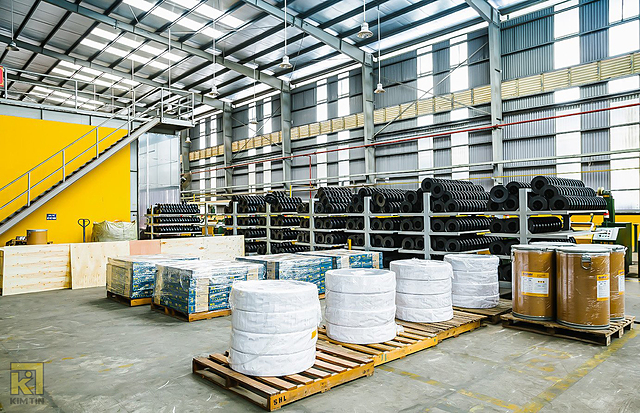According to the General Statistics Office of Vietnam, the gross domestic product (GDP) in the third quarter decreased by 6.17% compared to the same period last year due to the impact of the epidemic. This is the deepest decrease since Vietnam has calculated and announced quarterly GDP so far. At the same time, GDP in 9 months is reduced to only 1.42% compared to the same period last year.
Growth pressure therefore weighed on the last quarter of the year. In addition to the task of controlling the epidemic, Prime Minister Pham Minh Chinh also directed to focus the best efforts on economic development in the last months of the year, review and help enterprises overcome difficulties, and accelerate disbursement of public investment capital.
In the context that most sectors of the economy are in a very difficult situation, public investment is the "pull-driver" that the State can basically take the initiative in, especially in the context that the remaining capital is the 2021 budget plan will reach about VND 250,000 billion, or approximately USD 11 billion. According to the Ministry of Finance, by the end of September, the actual disbursement of public investment capital only reached 47.38% of the assigned plan, of which, 36 ministries, central agencies and 20 localities had disbursement rates below 40%; 4 central agencies and 11 localities achieved a disbursement rate of over 60%.
This fact, combined with the Government's determination and the epidemic situation showing signs of easing tension across the country, makes us confident that public investment in the last 3 months of 2021 will certainly be more positive compared to the beginning of the year. According to Agribank Securities Corporation (Agriseco), promotion of public investment will bring many benefits to the economy because of its leadership and spillover across many industry groups. The General Statistics Office estimates that in the period 2021-2025, if public investment disbursement rate increases by 1%, GDP will increase by 0.058%. At the same time, disbursing 1 dong of public investment capital led to 1.61 dong of non-state capital, 1.42 dong higher than the previous period.

Industry groups directly related to projects of technical infrastructure development, construction, transportation, etc. will be the first beneficiaries when public investment is promoted. According to BIDV Securities (BSC), three industry groups are forecast to "catch up" including construction materials (steel, cement, sandstone, plastic, asphalt); construction industry (construction, ETC, intelligent transportation, electrical construction, electrical materials) and real estate industry (including residential real estate and industrial real estate).
It is easy to see that the beneficiaries will not only include those directly involved in the mega-projects, but also related supporting industries. An example that is quite easy to imagine is that industrial production plants, factory constructions, infrastructure and bridges and roads have significantly increased the demand for machinery and equipment and basic materials such as non-ferrous metals, five metals, hand tools, welding materials, wooden boards... for production, structural steel fabrication The leading unit in the field of manufacturing and distributing these auxiliary industrial products is Kim Tin Group. It is estimated that sales of products through the distribution channel of Kim Tin Group Corporation in the fourth quarter will reach about 3,600 tons of non-ferrous metals, 28,000 tons of welding materials and 60,000 m3 of MDF. Revenue in the fourth quarter is expected to increase by about 24% compared to the third quarter, of which key products such as MDF products grew by nearly 2.5 times and welding materials increased by 33% compared to the previous quarter.
In the field of welding materials manufacturing and trading including welding rods, welding wires, welding composition and welding machinery and equipment, Kim Tin currently holds 45% of the domestic welding consumables market share and belongs to the top 15 large enterprises in world in this industry. By owning an omni-channel distribution system with more than 6,000 agents in all three regions after more than 20 years of construction, the company is able to accelerate the process of bringing products to customers in the year-end period.
Not only welding materials, Kim Tin is also a giant in the commercial business of MDF and after-board products when accounting for more than 20% of the domestic market share. This is also an area that can benefit when the real estate market, including residential and industrial, prospers from promoting public investment.
According to VNDirect Securities Company, a number of public investment projects that have had a positive impact on the real estate market have been and are expected to start construction in 2021 such as Long Thanh International Airport Phase I, 11 component projects of the North-South Expressway, Nhon - Hanoi railway station metro line, Thu Thiem bridge 2 and 3, metro line No. 1 Ben Thanh - Suoi Tien... Information on planning helps to increase land prices, improved infrastructure helps attract foreign investment is the main driving force for real estate market growth in the coming years.

This is also a motivation for businesses to continue to invest and achieve high growth results when the economy recovers (Vietnam is expected to set a growth target of 6-6.5% in 2022). As in the case of Kim Tin, the company not only has a 20% MDF market share, but also aims to achieve 45% by 2025 by promoting cooperation activities in deep processing, furniture processing, finished furniture to add value and extend the supply chain on a scale of 10 hectares in Nam Dong Phu industrial park…
Along with that, Kim Tin continues to expand its portfolio of auxiliary industrial products and focuses on researching and manufacturing products such as alternative adhesive materials, abrasive materials and specialized welding materials. Kim Tin plans to invest about VND 300 billion in these new product factories and put them into operation in 2023. As with the economy, these will also be important "tractors" for the enterprise to continue to grow in the future.
According to Nguoi dong hanh